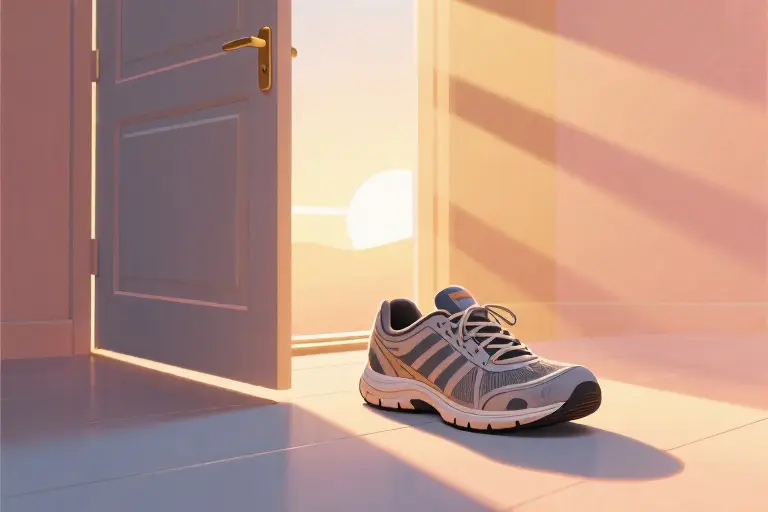The air shifts when you enter the room. Not with words, not with sound—just this low-frequency hum of anger that vibrates beneath your skin. I notice it first in your jaw, that almost imperceptible tightening when you correct my pronunciation. Then the way your fingers press just a bit too hard against the tabletop, leaving temporary pale spots on your knuckles. You believe it’s hidden, this rage of yours. But it’s the loudest thing about you.
And mine? Mine was a switchblade tucked under a pillow for eighteen years. Not the cheap plastic kind from convenience stores, but cold steel with a weight that left permanent dents in the mattress. I’d trace its outline with my fingertips each night, not out of fear—children of violence understand this distinction—but out of certainty. Fear whispers ‘maybe’; preparation knows ‘when’.
Your anger wears polished shoes and speaks in measured tones at dinner parties. It manifests in how you ‘helpfully’ rearrange the dishes I’ve set on the table, how your compliments carry microscopic barbs (‘This sauce is surprisingly good’). Mine wore combat boots through Bangkok’s night markets at eighteen, kept me upright during three-day benders that should have killed me, made me scan every room for exits before noticing its decor. Our angers went to different schools, but they’re cousins beneath the skin.
There’s a particular quality to the anger of those who grew up waiting for the other shoe to drop. Not the explosive kind that shatters wine glasses, but the sort that lives in the tendons—always braced, always ready. I learned to read its language early: the exact angle of my father’s silhouette against drawn curtains, the specific hollow sound of an empty vodka bottle rolling across kitchen tiles at 3 AM. Your anger corrects grammar; mine calculated escape routes before first dates.
What neither of us realized was how heavy armor gets when you never take it off. That survival mechanisms have expiration dates. The switchblade under my pillow stopped protecting me the day it started keeping everyone else out. Your perfectly modulated critiques? They isolate you just as effectively as my clenched fists ever did. Trauma reshapes anger into a thousand different forms, but they all share the same fingerprint: the terror of losing control, of being vulnerable again.
Now when I catch myself automatically noting fire exits in restaurants, or when you reflexively rephrase someone else’s sentence mid-conversation, I wonder—what ancient wounds are we still guarding against? The ghosts we’re fighting stopped being real years ago. But the body remembers. The anger remembers. And it keeps speaking long after the danger has passed.
The Unspoken Violence of Your Anger
It arrives before you do. That tightness around your mouth when you enter a room, the way your fingers flex against your thigh when someone contradicts you. Your anger doesn’t roar; it hums. A low-frequency vibration that makes the air taste metallic.
I’ve become fluent in its dialect. The particular way your left eyebrow lifts half a millimeter higher than the right when you’re about to correct someone. The subtle shift in vocal timbre when you say “I’m just playing devil’s advocate” for the third time in a meeting. These aren’t outbursts – they’re controlled demolitions.
In our kitchen last Tuesday, you said “You always forget” about the recycling with such precise enunciation that the words left papercuts. Your hands were steady as you rearranged the bins, but your throat pulsed with swallowed words. That’s the cruelty of this anger – its restraint makes it inarguable. If you’d screamed, I could’ve matched you. But this? This quiet certainty of your rightness? It turns my bones to sand.
Office culture rewards your version of anger. They call it “high standards” when you dismantle presentations with surgical questions. “Attention to detail” when you correct emails that weren’t yours to edit. No one sees how your pen leaves indents in meeting minutes when junior staff speak out of turn.
At home, it wears different costumes. The sigh that means “I shouldn’t have to ask.” The way you say “Interesting” when I share an opinion you find naive. Your speciality is the delayed reaction – the conversation that seems fine until three hours later, when you “just want to clarify” something I said that bothered you.
What fascinates me most is how thoroughly you’ve convinced yourself this isn’t anger. You’ve polished it into something respectable – principles, boundaries, intellectual rigor. But I know the smell of burning bridges, even when they’re disguised as standards.
My therapist calls this “covert aggression.” I call it suffocation by a thousand corrections. Either way, we both know the truth: your anger is the quietest scream I’ve ever heard.
The Arithmetic of Survival
The knife under my pillow wasn’t about fear—it was basic math. At eighteen, calculating risks became second nature when you’ve grown up with violence as your first tutor. That switchblade in Bangkok’s night market? Just another variable in the survival equation I’d been solving since childhood.
Foreign cities were easier than home. At least the dangers there made sense. Pickpockets moved predictably, drunk backpackers followed visible patterns. But the man who sat motionless in our dark living room, curtains wide open to the streetlights—his algorithms were incomprehensible. I learned to measure threats by the angle of his shoulders, the interval between his breaths. Defense mechanisms aren’t born; they’re painstakingly derived through repetition.
Those drawn curtains still haunt me. Not because they concealed anything, but because they didn’t. The utter lack of pretense in his emptiness was more terrifying than any hidden rage. At least anger has structure, rules you can anticipate. But that void where a father should have been? That’s what forged my particular brand of fury—cold, precise, and always prepared.
The marketplace blade was just metal. The real weapon was the hypervigilance humming in my veins, that constant low-grade calculation of exits and threats. Trauma survivors know this secret: true safety doesn’t come from reacting to danger, but from outthinking it. We don’t startle when the glass shatters—we’d already counted the steps to the back door.
This isn’t courage. It’s compulsive arithmetic. Your body keeps solving for X long after the original problem has faded, dividing every glance and tallying every tone. The irony? That knife never left its sheath. The real cuts came later, when intimacy required me to put down the equations and trust that someone else’s math could add up.
The Two Languages of Anger, One Shared Fear
The clenched jaw you think no one notices. The way your voice drops half an octave when correcting someone. These aren’t just habits – they’re biological survival scripts written in the amygdala’s ancient code. Your anger and mine speak different dialects, but both originate from the same neural alarm system screaming danger.
Neuroscience shows our brains can’t distinguish between a physical threat and an emotional one. When trauma rewires that system early, it stays stuck in permanent scan mode. Hypervigilance becomes your default setting – not because you’re paranoid, but because your nervous system remembers what happens when it doesn’t stay alert. That’s why childhood violence survivors often startle at slamming doors or tense during casual disagreements. The body keeps score long after the actual threat disappears.
Your anger lashes outward like a whip – precise strikes meant to control the environment. Mine turned inward, becoming an invisible shield. Both are adaptations to chaos, just opposite sides of the same coin. Attackers train us to expect violation, so we either preemptively strike or constantly prepare to deflect. The office micromanager barking orders and the silent partner sleeping with a knife under their pillow? Same wound, different scars.
This explains why trauma survivors often confuse safety with control. If anger helped us survive childhood unpredictability, we’ll instinctively weaponize it in adulthood whenever we feel vulnerable. That explosive reaction to a partner’s harmless comment? Not about them – it’s your nervous system recognizing an old pattern. The way you rehearse arguments in the shower for hypothetical confrontations? Your brain practicing its emergency drills.
The cruel irony is these defenses that once saved us now isolate us. Relationships require vulnerability, but trauma taught us vulnerability gets you killed. So we armor up with anger – some with barbed words, others with impenetrable walls – not realizing we’re recreating the very loneliness we fear. The survival mechanism becomes the obstacle to living.
Yet understanding this changes everything. When we recognize anger as a distorted cry for safety rather than inherent cruelty, we can finally address the real wound beneath it. Not by eliminating anger – that would be like uninstalling a smoke detector – but by updating its faulty wiring. The first step? Hearing what it’s actually trying to say beneath all the noise.
When Armor Becomes Chains
The first time you took me to dinner, I noted three exits before sitting down. You thought it was charming, this little quirk of mine – ‘so observant,’ you said. What you didn’t see was the mental blueprint forming: which heavy object could become a weapon, which window ledge might bear my weight if jumping became necessary. These calculations happen in the space between your question about the menu and my reply about preferring the fish.
This is how trauma lives in the body long after danger passes. The hypervigilance that once kept me alive now isolates me in crowded rooms. My nervous system still operates on childhood software, mistaking raised voices for threats, interpreting tears as emotional warfare. When you cried last Tuesday over your mother’s illness, my lips curled into something resembling a smile – not from cruelty, but from some ancient defense mechanism misfiring. Your hurt triggered my survival mode, and survival mode has no empathy module installed.
We carry these adaptations like invisible armor, not realizing how the weight bends our spines over time. The same anger that helped me walk unscathed through Bangkok’s red-light district at midnight now makes me flinch when you reach to tuck my hair behind my ear. The defensive strategies that worked against violence become clumsy tools for love. I watch myself pushing away comfort with the same reflexes that once dodged punches, and the irony tastes bitter.
There’s a particular loneliness in realizing your protection systems have outlived their purpose. Like keeping winter coats in summer, the very things that preserved you now prevent you from feeling the sun. My hands still search for knives under pillows in hotels, though the man who taught me that precaution has been dead for years. The body remembers what the mind tries to forget.
Perhaps this is the cruelest trick trauma plays – it makes us prisoners of survival instincts we no longer need. We become architects building moats around castles no longer under siege. The anger that once stood guard at the gates now refuses to recognize peace when it comes knocking, mistaking outstretched hands for raised fists.
Your confusion when I tense at sudden movements mirrors my own. I don’t know how to explain that my body reacts to the present as if it’s the past, that danger lives in my muscle memory like a song I can’t stop humming. The work isn’t unlearning fear, but teaching my nervous system to recognize safety – a language my childhood never taught me to speak.
The knife is gone from under my pillow now. But some nights, my hand still reaches for the emptiness there, fingers curling around an absence that feels more familiar than it should. Muscle memory outlives necessity. The body keeps score long after the danger has passed.
Your anger might look different from mine – louder, sharper, more socially acceptable perhaps. But I recognize the shape of it. That tension in your shoulders when someone challenges you. The way your voice drops half an octave when explaining why you’re right. You think it’s about facts, about correctness. I know better.
We carry our childhoods in our nervous systems. For you, maybe anger was the only language that got heard in your house. For me, it was the silent preparation for blows that might come, the hypervigilance that kept me alive through years of unpredictable violence. Same survival mechanism, different disguises.
The tragedy isn’t that we learned to use anger as armor. The tragedy is how long we keep wearing it after the war is over. How we mistake its weight for strength. How we push away love with the same hands that once fended off harm.
So I’ll ask you what I had to ask myself: What exactly is your anger protecting you from now? Not then, not in those dark rooms of your past, but here, in this present moment where no one is coming to hurt you?
The answer might surprise you. Mine did. Under all those layers of defensive rage, I found a terrified child who still believed pain was the only certainty. Letting go of anger felt like abandoning her to danger. Until I realized – the real abandonment was never letting her feel safe enough to put down the knife.
Your turn.





